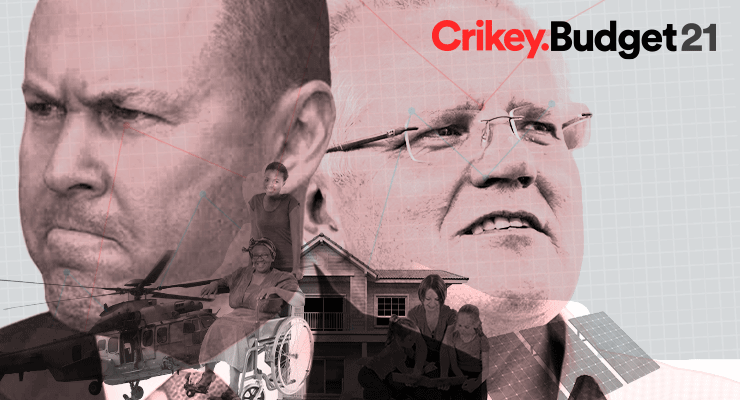
Josh Frydenberg’s 2021-22 budget locks Australia deep into the red for years to come with large deficits out to 2024-25, fuelled by increased spending that will permanently enlarge the role of government in Australia.
Frydenberg will run up a deficit of more than $100 billion next financial year, and a similar deficit the following year, despite the economy growing at over 4% and unemployment falling to 5% — all in the quest, he says, to push unemployment below where it was when the pandemic struck.
Treasury’s forecasts anticipate that to happen in 2022-23, when unemployment will fall to 4.75% before heading to 4.5% after that. While that would represent the tightest labour market since before the financial crisis, it still will do little to fuel wages growth: the government sees the Wage Price Index (WPI) only reaching 2.75% by 2025.
This means a real wage cut for Australian workers next year, and no real wages growth until 2025 when inflation will reach 2.5%. Australia’s net debt will rise to nearly one trillion dollars by 2025, despite the lower-than-forecast deficit this current financial year.
The government’s big spending will replace an absent business sector: in last year’s budget and again in the Mid-Year Economic and Fiscal Outlook (MYEFO) in December, the government confidently expected non-mining investment to hit 7.5% in 2021-22, but now says it expects growth of just 1.5%.
The government’s new spending is heavily skewed to the health and care sector, with a $17 billion-plus package of aged care spending as part of its response to the aged care royal commission; a $2 billion mental health package and a $6 billion infrastructure package. Much of the funding in aged care and mental health is permanent, while the government has also continued its low- and middle-income tax offset, the “temporary” tax cut that the government is unable to end.
In a budget with plenty of winners and few losers, the politics are all in the government’s favour — even if it represents a comprehensive abandonment of the debt ‘n’ deficits mantra that has been central to Liberal identity for a generation.
The budget at a glance
















But with Morrison’s form, you have to wonder how much will actually be spent.
Look at that underspend on the NDIS.
Thankfully Josh’s miscalculation on Jobkeeper was only $60B.
Gerry Harvey doesn’t need an extra thoroughbred stable.
These guys only announce. They tease. They dont deliver. Dont anyone gets their hopes up. A budget should be a tool to achieve a governments ends. In the past it has become an end in itself and it must be in surplus regardless of the needs of the electorate. This mindset has made the budget a fetish, a substitute for the real thing. If the libs have done anything good it is that they have gone away from this fetish and opened up the discussion on the correct purpose of a budget.
Buddyjets (2nd d and y is silent) don’t always turn into outcomes for the consumer/provider in need on the ground. The up starts, along the line get much while the inner circle gets most at some point. Competition between consumer sectors must look choice kosher, regardless of ideology.
The gods must be going crazy trying to decide who stays and who goes.